Blue plaque for Alderman Thomas Cramphorn unveiled at Chelmsford Theatre
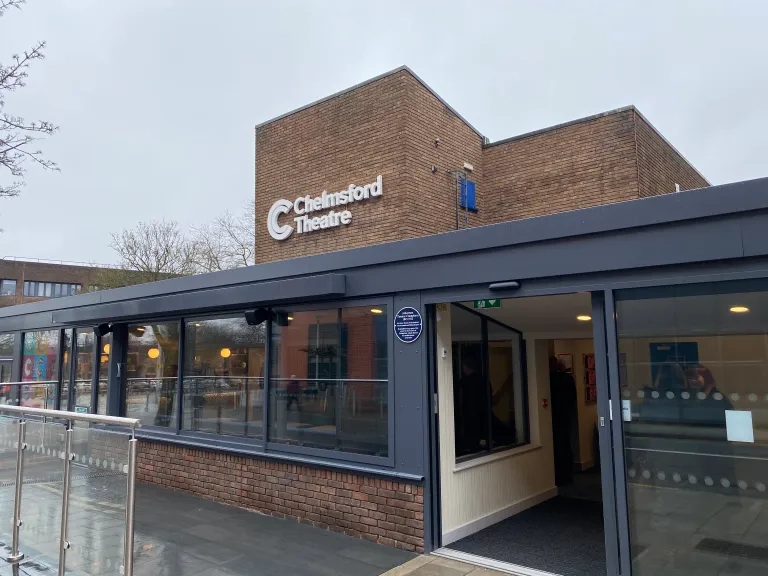
A blue plaque has been unveiled outside Chelmsford Theatre in honour of Alderman Thomas Cramphorn.
Blue plaques are installed to commemorate a link between a location and an historical figure or event. There are many blue plaques around Chelmsford, recognising some of the city’s most significant historic figures and events.
Alderman Cramphorn’s plaque recognises his significant contributions to Chelmsford, including a bequest in his will which part-funded the creation of a theatre studio.
Plaque revealed during ceremony
Alderman Cramphorn was a local businessman, philanthropist and was six times Mayor of Chelmsford.
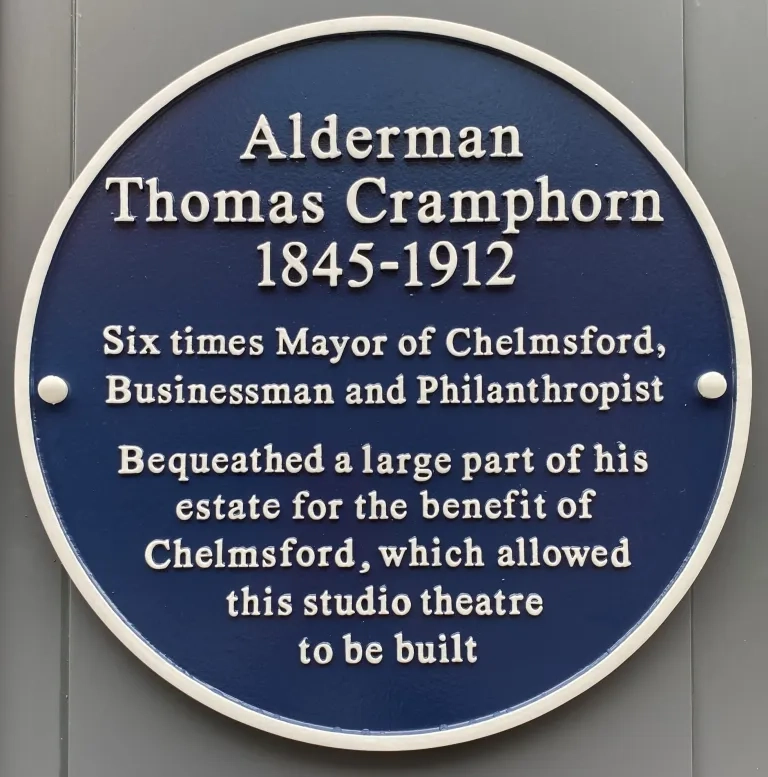
The plaque was officially unveiled during a small ceremony outside Chelmsford Theatre on 9 March. Relatives of Alderman Cramphorn attended the unveiling, as well as the Mayor of Chelmsford, Cllr Sue Dobson and her Consort Keith Dobson; the Deputy Mayor of Chelmsford, Bob Massey and his Consort Ali Massey, Councillor Stephen Robinson, Leader of Chelmsford City Council; Councillor Marie Goldman, Deputy Leader of Chelmsford City Council; and various council staff.
During the event, touching on Alderman Cramphorn’s mayoral years, the Mayor of Chelmsford said:
““For me, holding the position of Mayor of Chelmsford is a wonderful honour and privilege, and one that I shall always remember. For Alderman Cramphorn to have held this position six times during his lifetime demonstrates his incredible commitment to public service and philanthropy. Having a blue plaque installed is very much an honour and it is fitting that Thomas Cramphorn’s contributions to Chelmsford are recognised in this way.”
The Mayor of Chelmsford, Cllr Sue Dobson
Councillor Goldman also reflected on the importance of continuing to invest in arts and culture throughout Chelmsford:
““I am really proud to be standing here in a building which has played an important role in the history of arts and culture in Chelmsford, and is a crucial part of Chelmsford’s cultural future. Chelmsford City Council’s recent investment in Chelmsford Theatre is key to the city’s success. It means more visitors to Chelmsford Theatre, which in turn means footfall for our restaurants, bars and shops. It also means that our city is showing a commitment to growing arts and culture across Chelmsford, continuing to build on Alderman Cramphorn’s great legacy that we’re celebrating with this blue plaque.”
Cllr Marie Goldman, Deputy Leader of Chelmsford City Council and Cabinet Member for Connected Chelmsford.
Anthony Cramphorn, Alderman Cramphorn’s great-great-nephew said the Cramphorn family are grateful for this recognition of their great-great-uncle’s legacy:
““My great-great-uncle, TJD – as we, the family always knew him – made many contributions to the town of Chelmsford and we, his direct relatives, are pleased that his life and achievements are being acknowledged with this blue plaque and the tribute panel inside Chelmsford Theatre.”
Anthony Cramphorn, great-great-nephew of Alderman Thomas Cramphorn

Internal plaque further explores Cramphorn’s life
The blue plaque joins an internal information board on Cramphorn, which was installed earlier this week inside the theatre.
The information board further explains Cramphorn’s extensive legacy and his bequest to Chelmsford.

Chelmsford Theatre Studio began life in 1981 as the Cramphorn Theatre. The 165-seat theatre was built next to the larger Civic Theatre as an additional space to complement the existing venue. During a recent refurbishment, the Civic Theatre and Cramphorn Theatres were unified into one theatre complex – known as Chelmsford Theatre and Chelmsford Theatre Studio.

Read on to find out more about Thomas Cramphorn’s remarkable life and legacy.
Alderman Thomas John Deeks Cramphorn
Alderman Thomas John Deeks Cramphorn was born in Chelmsford in 1845 to Christian and Martha Cramphorn. He had a younger brother, Octavius, and sister, Maria. His father appears to have been an accountant, but also worked as a shoemaker, employing a team of ten people. Cramphorn was educated at Hunt’s School in Chelmsford and Ongar Grammar School.
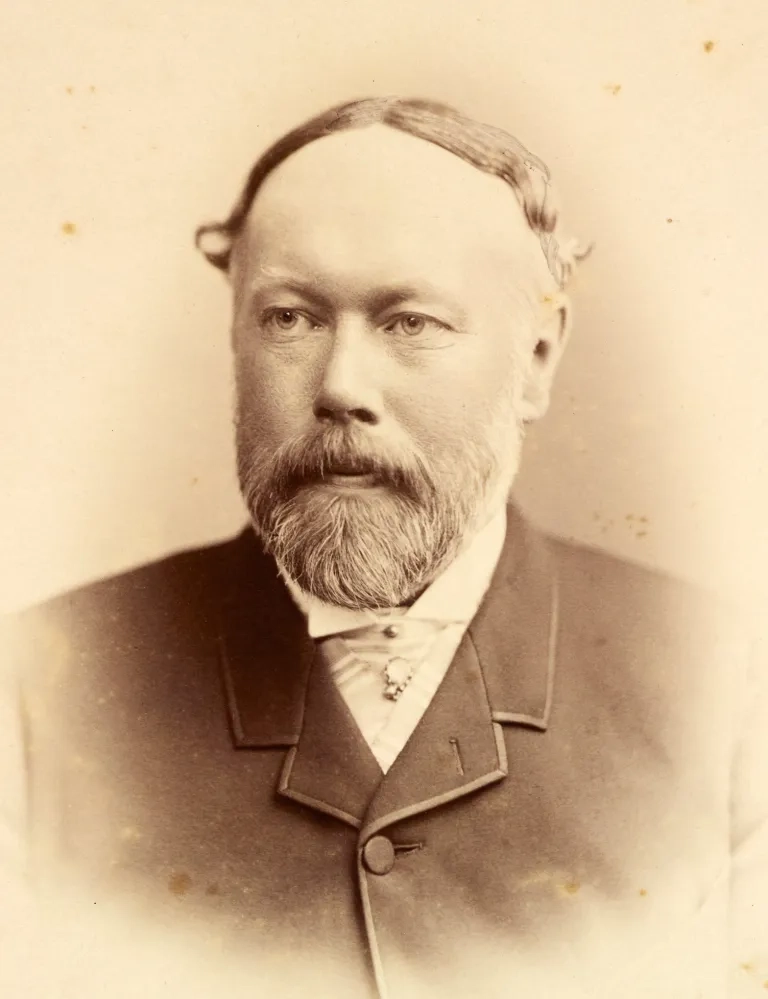
Cramphorn spent much of his life as a resident of Chelmsford, except for some years living with his parents in Maldon. It is clear that he cared deeply for his hometown of Chelmsford. During his lifetime he made numerous contributions towards the betterment of the town and its people.
A successful local businessman
At the age of 19, Thomas Cramphorn first ventured into the corn business in a partnership with a Mr Charles Hicks of Maldon. He remained in this partnership for 17 years. In 1881, he then purchased the business of a Mr Fredrick Hicks and returned to Chelmsford.
Over some years, Thomas Cramphorn built up his corn and seed business. Then, in the 1890s, he merged his firm with his brother Octavius Cramphorn’s similar business. The brothers’ joint venture quickly grew to become one of Essex’s biggest agricultural firms. In 1899 the business was valued at £51,000 (around £4 million today). By 1909 they had mills at Bulford and shop branches in Brentwood, Clacton, Ilford, Romford, Southend and, of course, Chelmsford, including on the High Street where the entrance to modern-day Bond Street is located.
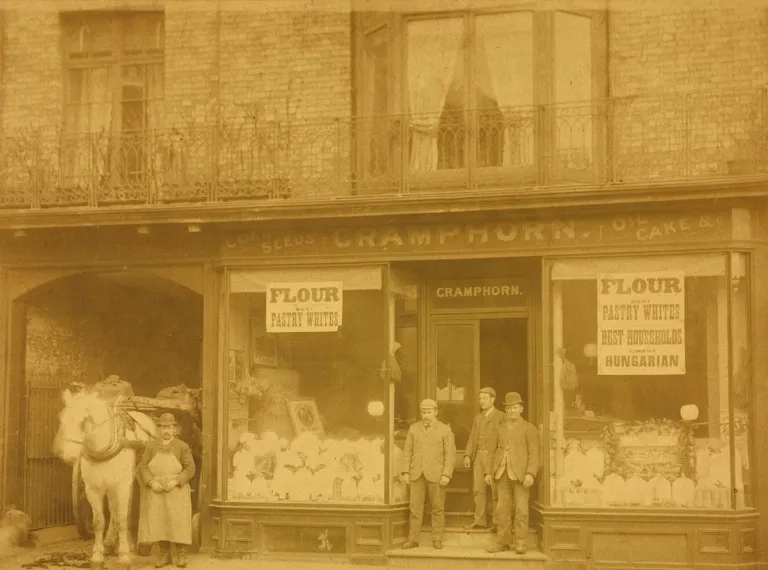
The family firm continued to operate after Cramphorn’s death in 1912 and, by the 1960s, had more than 70 shops across Essex. It remained a substantial farming operation until 1963.
In addition to his core business, Cramphorn also served a number of years as Director for the Chelmsford and Maldon Gas Companies, the West Essex Building Societies, the Chelmsford Land Company and the Chelmer and Blackwater Navigation Company.
A lengthy political career
Thomas Cramphorn first entered politics in November 1889 when he was elected as a council representative for the North Ward. From this point on, Cramphorn served Chelmsford’s town council continuously until his death in 1912.
During his career, Cramphorn was a member of several council committees, including the Finance Committee, Town Improvements Committee and Joint Sewerage Committee.
In his political capacity, Cramphorn was well known for his devotion to improvements to the town of Chelmsford. He took particular interest in the welfare of Chelmsford’s working people. One of his last public duties was the laying of a stone to commemorate the completion of the first stage in a council scheme to provide improved housing for working people.
Cramphorn was also highly supportive of the provision of bank holiday sports activities and other ‘treats’ for children around Chelmsford.

Multiple times Mayor of Chelmsford
Thomas Cramphorn served six terms as the Mayor of Chelmsford. An exceptional figure, which is only exceeded by four other mayors who each served seven times. He was Mayor of Chelmsford in 1893-4, 1897-8, 1908-09, 1909-10, 1910-11 and 1911-12.
His mayoralties involved many duties, and, in his obituary, the Essex Chronicle wrote of his dedication to these: “On every occasion [Cramphorn] performed his duties to the credit of himself and of the town, and was always ready to extend hospitality as Mayor of the Borough when occasion arose.”
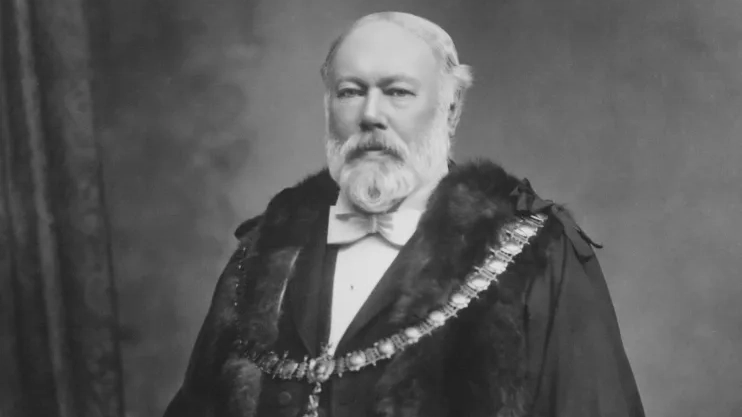
In his first term as mayor in 1894, Cramphorn officially opened Chelmsford’s new Recreation Ground. In the same mayoral year, he was also presented to Queen Victoria at court. During his final mayoral year in 1911, he represented Chelmsford at the Coronation of King George V and Queen Mary.
In his fourth year as Mayor of Chelmsford, he was raised to the dignity of Alderman Cramphorn. The title derives from the Old English ealdorman, or ‘elder man’ which, during the 9th century, described leaders of individual shires appointed by the monarch. By the 1800s, the term had evolved to ‘alderman’ and described a member of a municipal assembly or council. The bestowal of the title reflected Cramphorn’s unwavering devotion to the duties of his office.
A generous and kind-hearted philanthropist
Cramphorn was well known for his generosity and interest in the welfare of the town of Chelmsford and its residents.
He frequently donated money to charitable causes and was known to distribute coal, flour, and other provisions to those in need during the festive season.
Shortly after his death, Rev. E. J. Pressey, Vicar of St John’s Church in Moulsham referred to Cramphorn as “always ready to undertake what he felt to be for the good of the community, and who was in many ways in active and whole-hearted sympathy with the poor.”
Alderman Cramphorn’s popularity and respect from the people of Chelmsford is clear when looking at his funeral arrangements. His funeral on 27 December 1912 was attended by many people who lined the streets of Chelmsford as the procession passed by. Included in the procession were members of the Cramphorn family, employees, members of the Corporation Fire brigade, members of the 5th Essex Regiment, The Army Service Corp and the County Constabulary.
Cramphorn never married and lived with his sister and niece for many years up to his death. He left substantial sums of money to his siblings, nieces, and nephews, but he also bequeathed money generously elsewhere.
To his servants and employees, he left varying sums of money. Some of his longest-serving employees even received a weekly stipend for life.
Several town councils around Essex also benefitted from Cramphorn’s will, including Maldon, Clacton-on-Sea and Chelmsford. According to the Essex Chronicle his bequest to Maldon was to be spent on “such public improvements or for such hospital or educational purposes in the Borough of Maldon as the Town Council shall decide.”
Alderman Cramphorn’s legacy in 2023
Most significantly, Alderman Cramphorn’s will featured an estimated £10,000 (around £1.5 million today) bequeathed to Chelmsford. The will stipulated that the money should be spent on a building or improvements that would “advance the dignity of my native town and promote the prosperity and wellbeing of the town and its inhabitants”.
The sum was first granted to his niece, Miss Jessie Cramphorn, and then, after her death, to Chelmsford Town Council. Five years later, on 25 April 1981, Councillor A.E. Cole, Mayor of Chelmsford 1980–81, opened a studio theatre in Chelmsford. The new venue was part-funded by Cramphorn’s bequest. Since then, this theatre space has hosted varied performances for the people of Chelmsford to enjoy. Today, it hosts live screenings from across the globe and varied comedy acts, and remains a huge contributor to cultural experiences in Chelmsford.
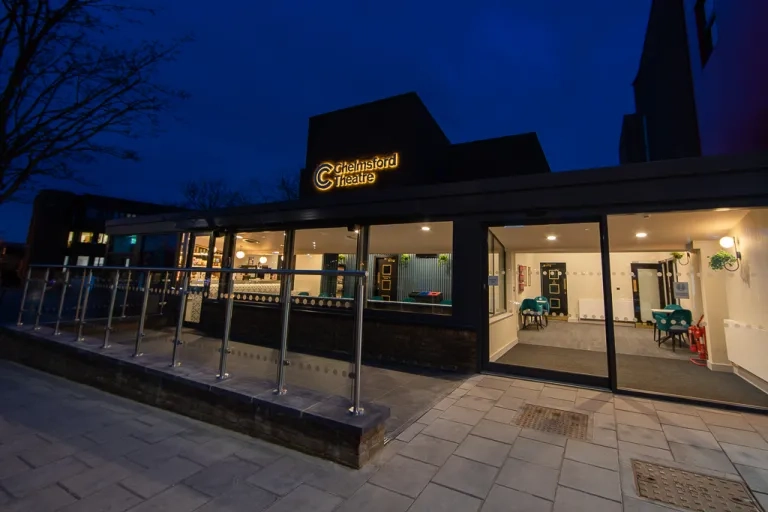
Other bequests in Cramphorn’s will continue to do good today. Legacies left to the Rector and Churchwardens of St Mary’s Church, Chelmsford (later Chelmsford Cathedral) and to the Vicar and Churchwardens of St John’s Church, Moulsham, aimed to provide “comforts for the benefit of deserving poor inhabitants of the said parish[es]”. The funds led to the formation of charities which today give annual grants to organisations working to relieve homelessness and poverty in Chelmsford.
Cramphorn’s legacy in Chelmsford also includes Cramphorn Walk, close to Rainsford Lane. Named in tribute to the man who contributed so much to Chelmsford and Essex.
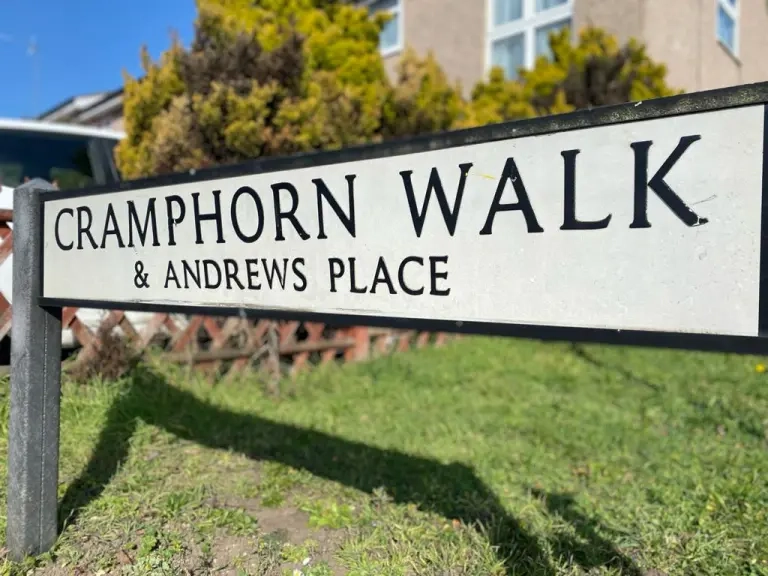
Elsewhere, in Clacton on Sea, a memorial promenade shelter – which stands overlooking the sea today – was built with a bequest of £500 from Alderman Cramphorn.
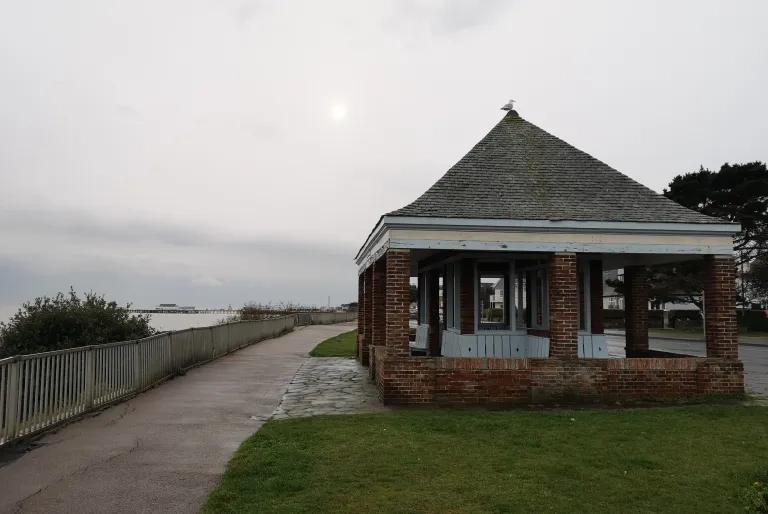
Following his death, the Essex Chronicle said: “Mr. Cramphorn was a man of most kindly, lovable disposition, and he will be sorely missed for his geniality and generosity, and his great public service.”
